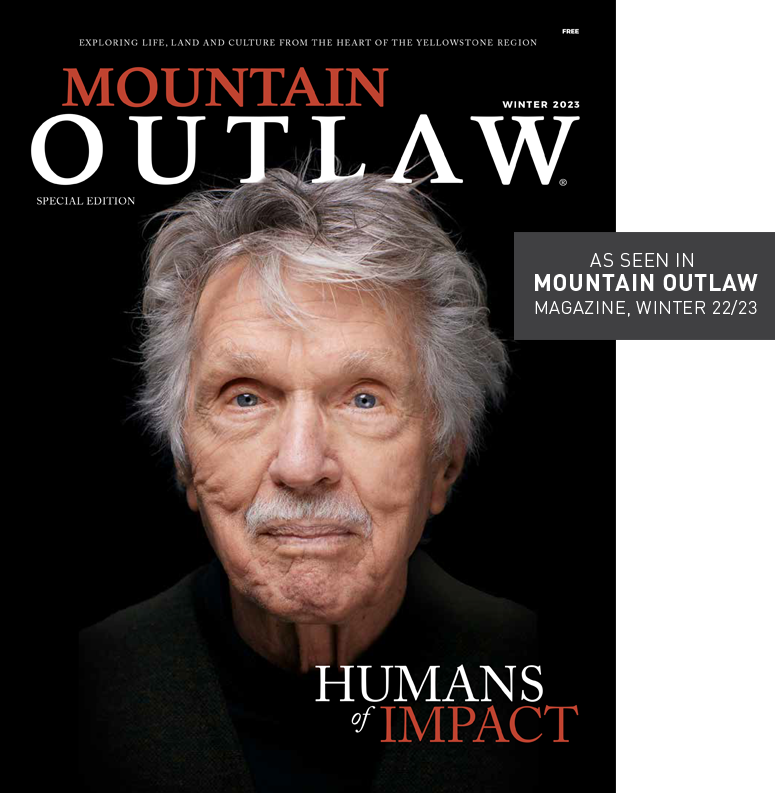One Woman’s Quest to Empowering Women in STEM
BY MIRA BRODY
In March 2022, as a part of Women’s History Month, Kris Inman stood in a courtyard at the Smithsonian Institute in Washington, D.C. alongside a life-size, orange statue of herself speaking with visitors. Her statue was one of 120, and a part of #IfThenSheCan—an exhibit that depicted recipients of the American Association of Applied Sciences IFTHEN STEM Ambassadorship.
The statues, stark against the institute’s other displays, represented a strong force that Inman remains passionate about—leading women in STEM fields.
“It was really amazing to see the support that was shown from the public for women in science and STEM,” said Inman. “It was gratifying to be a part of and speak with young girls.”
The Smithsonian named it “the largest collection of statues of women ever assembled together.”
Although today Inman works for the U.S. Fish and Wildlife Service in Alaska, she was a resident of Ennis, Montana, for 20 years where she worked for the Wildlife Conservation Society. In the early 2000s, alongside her husband Bob, she co-led extensive wolverine research. Their findings revealed that open space in southwest Montana is critical to connecting high elevations that wolverine and other species, like bears, rely on to travel through the Greater Yellowstone Ecosystem.
By 2013, she launched the Bear Smart Big Sky Council, which aims to reduce human-bear conflicts and is continuing to educate and empower the Big Sky community to live responsibly in bear country by using bear-resistant trashcans and understanding the importance of bear safety. Although she’s no longer in Montana, Inman remains proud of the work Bear Smart did for Big Sky’s community.
Today, Inman is continuing her pursuit to empower others in making positive change through her program Women in the Wild. At its epicenter, Women in the Wild encourages young women to join the field of STEM and provides access to role models like them—women—in STEM fields. The effect of Inman’s work is apparent in Big Sky through women like Laney Smith, born and raised here in Montana.
Smith is currently studying community center design with a double minor in math and studio arts at the University of Vermont. The spring before she left for college, she recalls working alongside Inman with a group of other girls to learn more about women in STEM fields and Women in the Wild’s work.
“I thought it was a cool opportunity because not often is there something just for girls that’s centered around empowerment,” Smith said. “I thought it was a great way to spread awareness with wolverines and bears, and show that it’s possible for girls to be a part of those programs.”
Smith says although social media has made it easier to find strong female role models in the STEM industry, it’s sometimes hard to find role models in real life who live and work within communities. Encouraging more women to pursue STEM work not only diversifies the field but offers more representation for those women seeking strong leaders and role models in their lives.
“I feel like when you are young … it’s pretty easy to tell little girls they can do whatever they want, but when they get older it’s harder, because they don’t see women doing whatever they want,” Smith said.
For Inman, in addition to empowering women, it’s about opening new doors for all. She states that science is a field that benefits from a diverse set of minds; it’s a disservice to everyone when someone doesn’t think that path is open to them.
“I am extremely fortunate to have grown up in supportive environments with mentors, and I see the value of having that support,” Inman said. “It allowed me to have that confidence and to reach for something that I thought might not have been reachable before. I hope to pay that forward for the next generation.”
Today, with the National Wildlife Refuge Team in Alaska, Inman works with colleagues who recognize that conserving these great places will take a new future-oriented approach to conservation, and they are committed to developing and modeling solutions to meet the challenges of this century–conserving our lands, waters and wildlife in a time of unprecedented, profound and rapid human-driven environmental change. At the same time, this work recognizes that people are part of nature and not separate from it– seeing people in this light, we no longer just identify people as the problem but also the solution.
Mira Brody is content marketing strategist at Outlaw Partners and producer of Mountain Outlaw magazine.

